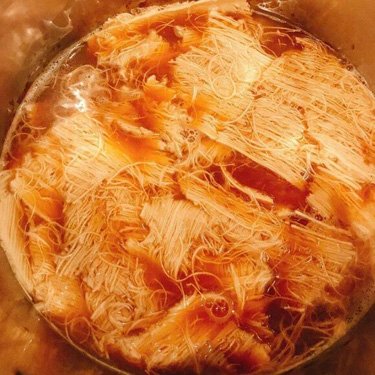Atlas Obscura tells us Barilla tried to build a machine to make it, and failed.
Twice a year, pilgrims in Sardinia trek from the city of Nuoro to the village of Lula under cover of night. They walk in solidarity, forgoing sleep and shelter—sometimes by the hundreds, sometimes by the thousand. Twenty miles later, at the entrance of Santuario di San Francesco, they reach their destination.
These seekers persist not to find the sanctuary itself, but to eat what may be the rarest pasta in the world. Su filindeu—literally “threads of God” in Sardo—is unfathomably intricate. It’s made by only three women on Earth, all of whom live on Sardinia. And they make it only for the biannual Feast of San Francesco. It’s been this way for the last 200 years.
The ingredients are simple: semolina wheat, water, and salt. The serving preparation is similarly uncomplicated: gamey mutton broth and a helping of tangy pecorino cheese. Making the pasta, however, is nearly impossible. Engineers from the Barilla pasta company attempted, unsuccessfully, to build a machine that could reproduce the technique. Celebrity chef Jamie Oliver also visited Sardinia in hopes of mastering the elusive noodle. After two hours, he gave up.
Paola Abraini, one of the masters of su filindeu, says the hardest part is “understanding the dough with your hands.” She kneads the mixture until it feels like modeling clay, then continues working it into rounded strands. When the semolina lacks elasticity, she dips her fingers in a bowl of salt water. When it needs moisture, unsalted water does the trick. The balance, says Abraini, “can take years to understand.”






Please Leave a Comment!